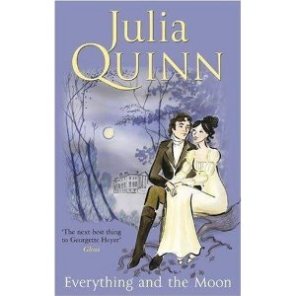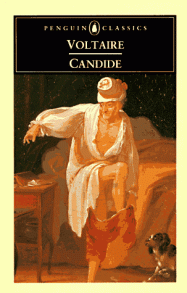Last day of the year. Feels a little festive – and then again, I never really liked the number 2011. 2012 has much nicer symmetry to it, don’t you think?
As ever, this month was about books. For the first part it was a lot of schoolbooks, but as soon as Christmas holidays started I was very much glued to the lovely blocks of paper. I managed quite a lot of them, compared to previous months, but I also had more leisure time.
So let’s start this thing off.

The latest book in George R. R. Martin’s A Song of Ice and Fire series, A Dance with Dragons, came out earlier this year, and a friend was good enough to lend me her copy. To my disappointment I did not like this book as well as the previous ones. The various points of views were scattered and did not feel as controlled as before, and we only briefly visit some of the characters from the earlier books. This is, of course, to let the readers know what came of the maddening cliff hangers left in the last book, and my guess is if I had waited for five years to find out I would have been very happy indeed. However, I read the fourth book only a short while ago, so the little bits did nothing for me. I find this to be a doldrums in the series: stagnant and slow.
Published: Harper Voyager 2011 (I read Bantam Books 2011)
Pages: 959

Julia Quinn’s Everything and the Moon, the first book in the Lyndon Sisters series, was meant as a break from doorstopper-sized books, and as such it did its job. It is a Regency romance, and as I happen to be particular about the genre, I did not much like this one.
I will borrow the blurb from the author’s website (http://www.juliaquinn.com):
Seven years ago she broke his heart…
When Robert Kemble stumbles across Victoria Lyndon in hedgerow maze, he can’t believe his eyes. The girl who’d torn him in two, who let him plan on elopement and then left him standing by the side of the road, was suddenly within arm’s reach, and even though his fury still knew no bounds, she was impossible to resist…
Seven years ago he left her all but ruined…
Victoria’s father had told her an earl would never marry a vicar’s daughter, and he was right. Robert had promised her marriage, then danced off to London while she suffered the shame of a foiled elopement. But even though Victoria doesn’t particularly enjoy her new life as a governess, when Robert offers her a job of a different sort—his mistress—she refuses, unable to sacrifice her honor, even for him.
But Robert won’t take no for an answer, and he vows to make her his, through any means possible. Can these star-crossed lovers learn to trust again? And is love really sweeter the second time around?
My misgivings with this book are as follows:
- Style is not what one expects from a Regency romance. Expressions are at times too modern, and nothing kills the mood like unresearched diction.
- Victoria is intended as an independent woman, but she often lapses into pathetic pining and the traditional there-is-no-way-he-loves-me.
- From the first page, the story is very mushy, and overly sweet. I think there were eyes like deep pools, which is unforgivable. (I regret not writing the description down.)
- Despite the possibility I will be labelled a prude I have to say I do not like sex in my Regency romance, thank you very much. It simply does not fit.
- The plot gets boring when the truth of what actually happened on the night of their elopement becomes known to Robert – and this happens around the middle of the book.
The only positive comment I have in my notes is that Robert is quite amusing when he cares to be. There was a conversation about hedgehogs living in sin that made me giggle.
I have read the second part of the series, Brighter Than the Sun, which I did like better. That one I can almost recommend.
Published: Avon Books 2007 (I read Piatkus 2009)
Pages: 372
The next books are not in the order I read them but in groups.

I had wanted to read Maurice Leblanc’s Arsène Lupin books for a long time and finally borrowed three from a friend: Arsène Lupin, Gentleman Thief, Arsène Lupin vs Sherlock Holmes , and 813.
I love thieves, and Arsène Lupin is the best of them. He is a conman, confident, clever, and uncatchable. He is always cheerful, always wins – and never resorts to killing. That is central in some of Leblanc’s work. If there is a murder, you know it was not Lupin, for he does not need to stoop to violence to get what he wants. (And make no mistake – he will get what he wants.)
All the books I have read so far were charming, and I am going to try and read all of them!
Published: 1907/1908/1910
Translation: Jalmari Finne 1967/ Jalmari Finne 1967/ V. Hämeen-Anttila 1990
Pages: 182/204/426

My holiday project was to read the whole Mistborn trilogy by Brandon Sanderson. The project was success, and I enjoyed it.
I did not love the books with a passion, but I did like them. I will refrain from saying much about the plot for the fear of giving away too much – just know that there is rebelling against the governmental status quo and looking for the prophesied Hero of Ages. The plot is one of my favourite things about the series. There are clues you can pick up, ignore, or miss, and when you finally think you have things figured out your leads turn out to be red herrings. I prefer a more subtle kind of manipulation than Sanderson’s, the kind I cannot easily detect even after I know the truth. I am not saying that it bothered me much during reading: I went through the books fairly quickly in about ten days.
These books work as a mystery, and that is their charm. There is a lot of telling-not-showing with the minor characters, but I can forgive that simply because Sanderson is not afraid to kill off characters you grow to like.
So for anyone craving for a little brain exercise, I recommend this series.
Actually, read it anyway. It is a nice occupation. The order of books is the Final Empire – the Well of Ascension – the Hero of Ages. There is also a standalone novel located in the same universe. It came out this year and is called the Alloy of Law. I have not read it yet myself, but I have a feeling it would be better to start with the trilogy.
Published: 2006/2007/2008 (Gollancz 2009)
Pages: 643/763/724
So that is all. I have two more weeks of vacation, and there will definitely be panic reading before school starts again. I’m about that start with Leblanc’s the Hollow Needle, which will b followed by the Countess of Cagliostro.
I also got some books for Christmas – our family agrees beforehand what to get each other so there will be no disappointments, although no surprises either. I got both of the books I had wished for:
Richard Hopton: Pistols at Dawn – A History of Duelling
William Gibson: Brief History of Britain – 1660-1851
I also bought a couple of books last week:
Georgette Heyer: Frederica
J. R. R. Tolkien: the Hobbit
Lots to read! I hope next year will be even fuller of books than this year was – for you all!





